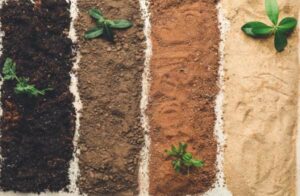The best soils and soil types for your drain field

Believe it or not the type of soil can greatly impact your drain field. Septic tanks are the unsung heroes of your household. They do all the dirty work, so you don’t have to! But what kind of dirt is best for drain field? It’s important to know, because if it isn’t done correctly, then things can go horribly wrong.
Starting with a quick overview of what soil is.
Soil is made up in layers from rock (or other materials) on the surface. Then decomposed organic matter, and minerals like clay or sand. The type of soil you have will determine what plants grow best there; some are more drought-resistant than others. There are three main types of soils – loam, sandy loam, and clay loam – each has its own pros and cons when it comes to planting grasses or vegetables
Types of Soil
Loam Soil
Many people don’t know the difference between loam and dirt, but it’s actually a very important distinction. Dirt is just loose soil that is not consolidated with organic matter or other substances. Loam, on the other hand, consists of a mixture of sand, silt and clay particles which have been mixed with organic material such as plant roots. It’s this organic material that gives loam a more fertile quality than dirt alone. And if you plan to grow plants in your garden then it will be worth your while to invest in some good quality loamy soil for your plants’ wellbeing. This soil is one of those things that you can never have too much of!
Sandy Loam
Sandy loam is a type of soil that can be used to cover septic systems. It has many benefits, including being inexpensive and easy to install. But there are some drawbacks too, like it can’t handle heavy traffic or runoff. If you’re considering installing sand in your yard, here’s what you need to know! 1) Sandy loam isn’t the best choice for areas with heavy traffic or runoff because it will compact over time. 2) Sandy loam should be at least 6 inches deep when covering a septic system – any less may not give enough protection from water intrusion into the ground below. 3) The installation process is relatively simple: just spread the sand evenly on top of grass so that it covers all
Clay Loam
A soil mixture that contains more clay than other types of rock or minerals. A loam is a soil mixture that is named for the type of soil that is present in the greatest amount. … Usually, clay loam contains a good deal of plant nutrients and supports most types of plants and crops. Generally, this type of loam is good for gardening but is generally poorly suited for conventional septic systems because of its slow drainage and permeability
So, there you have it! These soils that are associated with septic systems and now that you know a little more about them, you’ll have the needed knowledge to decide whether your current soil situation is best for your septic! While you’re here take a look at our website for our great specials for Labor Day here.
Check out these links and other Maxx’s Products Blog Posts for tips and tricks on your home maintenance care!
Why having a Septic Tank is simply better
Do’s & Don’ts Of Septic Tanks To Avoid Pumping
3 Reasons to Use a Septic System Additive
The Consequences of Infrequent Septic Tank Pumping
